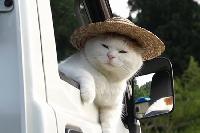| صفحات الموضوع: [1 2] > | How do I adapt to the changing times heavy on AI & MT? ناشر الموضوع: David Jessop
|
|---|
I have been a full-time freelance translator for the better part of two decades, mostly collaborating with agencies.
Recently, after a prolonged break, I returned to the translation field only to find a different playing field.
Looking back, I recall a time in these forums when CAT tools were considered with skepticism. However, around 2010, the adoption of tools like Trados Studio became requisite and not using them meant you didn’t get the job.
Now, a... See more I have been a full-time freelance translator for the better part of two decades, mostly collaborating with agencies.
Recently, after a prolonged break, I returned to the translation field only to find a different playing field.
Looking back, I recall a time in these forums when CAT tools were considered with skepticism. However, around 2010, the adoption of tools like Trados Studio became requisite and not using them meant you didn’t get the job.
Now, a similar adoption trend is emerging with AI and machine translation/post-editing tools. I have experience with DeepL, ChatGPT (which is now a household name for god's sakes), and I have been using Trados versions since the godawful 2007 Workbench.
Besides incorporating these MT/PE tools, what other strategies can I employ to stay competitive? How should I adapt my marketing tactics to thrive in this evolving translation landscape? Are translators who have embraced the AI-driven shift keeping busy?
Previously, having a paid ProZ membership and a solid profile guaranteed a steady flow of new clients and projects, and I was often so busy I needed to decline offers. However, this scenario seems to have shifted. ProZ may not be the primary source for new job opportunities anymore. What alternative marketing channels should I explore? How should I market myself differently now compared to before? In these changing times, what innovative approaches should I consider to enhance my market presence and attract new clients?
(Yes, I know I need to update my profile. I am considering the best way to do it, that’s part of why I am posting). ▲ Collapse
| | | |
Adapting has nothing to do with the use of tools. If your customers do not view you as an asset that's really difficult to replace, they will ditch you one day. Anything that can be done by a machine will be fed to a machine, with the potential readers' minds being engineered to believe that the output quality is perfectly acceptable. Translation companies will even try to use machines to translate things they can't handle, but that will only continue for a limited time. A customer bringing hund... See more Adapting has nothing to do with the use of tools. If your customers do not view you as an asset that's really difficult to replace, they will ditch you one day. Anything that can be done by a machine will be fed to a machine, with the potential readers' minds being engineered to believe that the output quality is perfectly acceptable. Translation companies will even try to use machines to translate things they can't handle, but that will only continue for a limited time. A customer bringing hundreds of thousands of words back saying they can't understand anything and refusing to pay is a great bucketful of ice water poured on the heads of AI admirers (written from experience while somewhat adapted). So, what makes you an invaluable asset? Well, it's the ability to deliver a full-human translation that just does the job of communicating ideas of high value in a clear way to someone who doesn't understand the source text. No tools will give you that ▲ Collapse
| | | | Dan Lucas 
المملكة المتحدة
Local time: 13:14
عضو (2014)
ياباني إلى أنجليزي
| I have no advice... | Oct 19 |
David Jessop wrote:
Besides incorporating these MT/PE tools, what other strategies can I employ to stay competitive? How should I adapt my marketing tactics to thrive in this evolving translation landscape? Are translators who have embraced the AI-driven shift keeping busy?
...but this is obviously a topical question.
One of the problems we have as translators is that so few of those working at what I would call the top level of the industry do actually use MT and other AI technologies. Or perhaps it would be more accurate to say that we do not know how many such translators exist because they likely do not feel comfortable in admitting that they use MT and discussing aspects of that usage. In functional terms the result is the same: discussion on this forum is seldom based on personal experience of what we might call the high end of MT or AI-supported translation. And if it isn't being discussed here, then where is it being discussed?
So often in today's society we see a lack of tolerance for opinions that diverge from the mainstream, and a rejection of the intellectual tradition of accepting that the other side might reasonably hold different views in good faith. On this forum the mainstream is what we might call traditional ("real"?) translation, and the divergent and thus prone-to-cancellation opinion is that MT might actually be useful. This is why I value input by people like Lieven and Philippe L, who actually use MT and seem to make a living from it.
I hope you get some useful responses.
Regards,
Dan
| | | |
First of all, I have to say that you haven't returned to the translation field at a good time, when almost everyone is complaining that there is much less demand. For my part, as I'm practically at the end of my career and have a small group of loyal clients, I'm still doing full-human translation and not worrying about CATs, AI, MT and PMTE (although I have done one or two of these projects, one which surprised me positively, while the other couldn't have been worse). But if I were in your shoe... See more First of all, I have to say that you haven't returned to the translation field at a good time, when almost everyone is complaining that there is much less demand. For my part, as I'm practically at the end of my career and have a small group of loyal clients, I'm still doing full-human translation and not worrying about CATs, AI, MT and PMTE (although I have done one or two of these projects, one which surprised me positively, while the other couldn't have been worse). But if I were in your shoes, and because some clients seem to be dazzled by AI, I think I'd have no choice but to adapt...
P.S. When some 20 years ago I said that I wouldn’t be using CAT tools, some colleagues exclaimed I had no future and yet I’m still here… ▲ Collapse
| | |
|
|
|
Gerard de Noord 
فرنسا
Local time: 14:14
عضو (2003)
أنجليزي إلى هولندي
+ ...
Hi David,
For a start, we need to make it clear to everyone who approaches us that we are not stupid when it comes to machine translation. And I think we should stick to working with the bilingual segments provided by our CAT tools for as long as possible.
The worst-case scenario is that we receive a ‘translated’ text file in the target language, with a request to proofread the text.
The second-worst scenario is that we receive two text files, one in th... See more Hi David,
For a start, we need to make it clear to everyone who approaches us that we are not stupid when it comes to machine translation. And I think we should stick to working with the bilingual segments provided by our CAT tools for as long as possible.
The worst-case scenario is that we receive a ‘translated’ text file in the target language, with a request to proofread the text.
The second-worst scenario is that we receive two text files, one in the source language and one in the target language, requesting whether the target text is ‘good’.
The third worst scenario is an online interface with a segmented text that has been ‘pre-translated’. Translators must then explain why they chose a different translation.
The fourth worst scenario is segmented text that is ‘pre-translated’ and presented in a CAT format. Translators must then identify and correct all errors.
The bottom line in all these cases is that MT and AI are umbrella terms for very different technologies.
At worst, the client has thrown the source text through Google or DeepL in the hope of getting the cheapest possible translation.
At the other end of the spectrum, there are direct and indirect clients who leverage their 15 years of collected, specialised CAT translations or advanced AI prompts to make translation work cheaper and more efficient.
As before, translators will have to remain a link in adding value for direct and indirect clients. Above all, they need to make sure that, as before, they understand more about all those new technologies (remember Trados workbench and Wordfast) than their clients.
Translated with DeepL.com (free version)
Cheers,
Gerard
[Edited at 2024-10-19 15:57 GMT] ▲ Collapse
| | | | | I thought it would be fun to translate something with deepL too | Oct 19 |
Translated with DeepL.com (free version)
I won't give the source text because even if someone understands Russian, they'll probably understand little out of it: it's a rebar fitter talking about how concrete is placed. He's not a talker, he's a builder (and, as usual, this is from my recent work: I have tons of such examples).
Here's deepL: Depending on the speed of concrete delivery, its fluidity, how it goes, according to its properties, if stratification goes, it is already visible, stratified into a certain fraction - crushed stone, water, a larger release, or a large release of milk, respectively, from the concrete"
Here's a human translation from someone with lots of experience and a lazy approach (these people may spend dozens of years sticking as closely as possible to the logic of the source text, which, I guess, is okay with many technical tasks): Depending on the speed of concrete supply, its fluidity, how it goes, by its properties, if the distance goes, it is already visible that it stratified at a certain fraction - crushed stone, water, a larger release, or a large release of weeping, respectively, from the concrete (concrete segregation was misrecognized as distance: it was a video file)
Here's my edited version: You can check concrete performance depending on the rate at which it is fed into the structure, how workable it is, how it behaves. For example, if it starts fractionating considerably by releasing broken stone and water, you have a segregation problem. Another bad sign is excessive bleeding
I know, I know, I'm talking about a crime of translating into a non-native language, but whatever, that's what I'm paid for. Anyone is free to disrespect me for that. I'm not stealing anyone's jobs because I work for very specific customers who have their own pool of vendors. I just wonder, how can deepL & Co. be of any help when translating something like that. When I was editing that translation (presumably not involving any MT input), I just rewrote it from the ground up. Was that an exceptional case? No. Things like that happen all the time
[Редактировалось 2024-10-19 17:59 GMT]
| | | | Lieven Malaise
بلجيكا
Local time: 14:14
عضو (2020)
فرنسي إلى هولندي
+ ...
Last week another one of my good agency clients, that consistently provided (and still provides) me with conventional translation work, asked me for my MTPE rate. I guess it will take some time for them to really convert, but I have no doubt that time will come. To me that's once more a confirmation of my suspicion that eventually all translation agencies will turn to MTPE as main translation source, although I remain convinced that at least part of them will continue to offer conventional trans... See more Last week another one of my good agency clients, that consistently provided (and still provides) me with conventional translation work, asked me for my MTPE rate. I guess it will take some time for them to really convert, but I have no doubt that time will come. To me that's once more a confirmation of my suspicion that eventually all translation agencies will turn to MTPE as main translation source, although I remain convinced that at least part of them will continue to offer conventional translation (there will always be some demand, imo), but on a way smaller scale and it will only be offered to the very best (or to the translators the agencies think are the best in relation to their word rate; if you are considered to be too expensive you will be out, no matter how good you are, I have no doubt about that).
I'm not pretending I know the secret of how to survive, and even thrive, in this AI/MTPE-dictated environment, but I have a certain approach and that approach works (for now). I'm willing to explain that approach, so take notes (or don't and have a good laugh or miserable cry, it's up to you):
1) I've trained myself in MTPE. I did that by starting to accept MTPE work from 1 client (about 4 years ago, in the beginning of the pandemic) to learn how to do it. To make sure I got regular jobs I broke for that first client a very important rule that I will repeat below: I accepted an MTPE rate of 50% of my conventional translation rate (don't do this as a general rule, it is important to not ask any less than 60% of your MTPE rate). Footnote: even today I maintain that basically too low rate for that client, as some sort of 'gratitude' for the fact they let me use them as a guinea pig. Apart from that I consider that client also as a potential lifeline in slower periods. You don't have to do this, I'm just a risk averse person and it makes me feel better.
Some translators don't believe that you can train yourself in MTPE. It might be language combination-dependent, but it is my feeling that most of them simply didn't put enough effort in trying to figure it out. In my experience it is VERY trainable.
2) Don't accept MTPE rates lower than 60-70% of your conventional translation rate. Some say that is higher than most agencies offer, but that brings me to point n° 3, probably the most important one:
3) Deliver top human quality, yes also when you are post-editing, each and every time. It will make you stand out from the competition (if you are also an editor, be prepared for some of the worst possible MTPE work by fellow translators) and make your rate acceptable.
I know there is also something like "light post-editing". In that case you are asked to make only really necessary changes, obviously against an even lower rate. Don't accept this kind of crap, even when the rate would be OK. Work of this kind can only make you a worse translator instead of a better one. You are basically training your brain to deliver crap.
No one knows what the future will bring, but for now this works for me. Perhaps I will be talking very differently in a few months, but (reasonable) fear for my future as a translator is something I've got since day one, March 1, 2005. Reality, however, is that I'm still good today, even to the extent that October 2024 is well on its way to become my best month ever (10K+). I don't expect the coming months to be the same, or not even to be close, but the fact that this is still possible in these challenging AI times, must mean something.
I wish you luck.
[Bijgewerkt op 2024-10-20 12:07 GMT] ▲ Collapse
| | | |
I would never give my rate for MTPE before I see the MT output.
| | |
|
|
|
Dan Lucas 
المملكة المتحدة
Local time: 13:14
عضو (2014)
ياباني إلى أنجليزي
| Sounds entirely reasonable | Oct 20 |
Giovanni Guarnieri MITI, MIL wrote:
I would never give my rate for MTPE before I see the MT output.
But presumably being able to assess this kind of thing on the fly is also a skill that has to be learned?
Dan
| | | |
Denis Fesik wrote:
Translated with DeepL.com (free version)
I won't give the source text because even if someone understands Russian, they'll probably understand little out of it: it's a rebar fitter talking about how concrete is placed. He's not a talker, he's a builder (and, as usual, this is from my recent work: I have tons of such examples).
Here's deepL: Depending on the speed of concrete delivery, its fluidity, how it goes, according to its properties, if stratification goes, it is already visible, stratified into a certain fraction - crushed stone, water, a larger release, or a large release of milk, respectively, from the concrete"
Here's a human translation from someone with lots of experience and a lazy approach (these people may spend dozens of years sticking as closely as possible to the logic of the source text, which, I guess, is okay with many technical tasks): Depending on the speed of concrete supply, its fluidity, how it goes, by its properties, if the distance goes, it is already visible that it stratified at a certain fraction - crushed stone, water, a larger release, or a large release of weeping, respectively, from the concrete (concrete segregation was misrecognized as distance: it was a video file)
Here's my edited version: You can check concrete performance depending on the rate at which it is fed into the structure, how workable it is, how it behaves. For example, if it starts fractionating considerably by releasing broken stone and water, you have a segregation problem. Another bad sign is excessive bleeding
I know, I know, I'm talking about a crime of translating into a non-native language, but whatever, that's what I'm paid for. Anyone is free to disrespect me for that. I'm not stealing anyone's jobs because I work for very specific customers who have their own pool of vendors. I just wonder, how can deepL & Co. be of any help when translating something like that. When I was editing that translation (presumably not involving any MT input), I just rewrote it from the ground up. Was that an exceptional case? No. Things like that happen all the time
[Редактировалось 2024-10-19 17:59 GMT]
Can't remember right now where I placed the file, but I have also put together a few sample passages showing the differences between Google Translate, translations done by a bilingual who is not a translator, and my own work. I am also planning to add translations done by other translators to show how even pro translators vary in how they might approach a text. Seeing the differences is jarring and really helps clients understand the value of choosing the right person for a particular job.
| | | | Dan Lucas 
المملكة المتحدة
Local time: 13:14
عضو (2014)
ياباني إلى أنجليزي
| Well, this resonates | Oct 21 |
Lieven Malaise wrote:
Perhaps I will be talking very differently in a few months, but (reasonable) fear for my future as a translator is something I've got since day one, March 1, 2005.
I have to say that this sense of always being slightly concerned about the future has been something that has characterized my life as a freelancer since I started in 2015. There's always a bit of anxiety about where the next meal is coming from.
Having said that, I never felt particularly secure as an employee either. Companies can and will lay off their employees pretty much whenever they deem it necessary. If I had previously worked for some large, heavily unionised public organization where it is quite difficult to get fired maybe my perceptions would be different, but I think my experience is not uncommon in the private sector.
Maybe we all just need to accept that working life is simply precarious.
Sorry David, this isn't much help in practical terms, I know!
Regards,
Dan
| | | | Tony Keily
Local time: 14:14
إيطالي إلى أنجليزي
+ ...
| There is very little remaining of the market you left | Oct 21 |
If you're working for agencies in the SP-EN combination and unless you specialise in some arcane niche with a high demand for reliable translation, the game is pretty much up. We've had experienced translators on these forums talking about a 95% YOY decline in volumes. I've survived this year through EU institutional translation, direct customers and the odd agency job. But, for the first time, about 40% of my income is from 'other sources'. (Don't worry: for now, I haven't 'broken bad'.)
... See more If you're working for agencies in the SP-EN combination and unless you specialise in some arcane niche with a high demand for reliable translation, the game is pretty much up. We've had experienced translators on these forums talking about a 95% YOY decline in volumes. I've survived this year through EU institutional translation, direct customers and the odd agency job. But, for the first time, about 40% of my income is from 'other sources'. (Don't worry: for now, I haven't 'broken bad'.)
There are people not working in the major European language combinations and/or with loyal direct customers and/or in a specialist area who are (at least for now) protected. You'll find them on the forums painting a rosier picture. On the other hand, the daughter of some friends of mine who'd studied modern languages at Oxford with the intention of becoming a translator has just opted to continue her studies in another field because staff and students viewed the sector as dead.
Sectors do disappear and there will always be those who buck the trends. The number of shoe repairers in the US declined from about 50,000 to about 5,000 in the 2000-2015 period and I'm sure business was booming for some of the 5000 remainers, maybe those specialising in pink handcrafted calfskin cowperson boots.
There is an MTPE market, but in my experience agencies are not up-to-speed on implementing a workflow to meet the relevant standard (ISO 18587:2017), particularly in the pre-editing phase. Too often you find outsourced recent graduates asking you to work on unformatted, raw OCR output. And when things go wrong, they tend to jump niftily out of the way like toreros to leave you facing the horned, onrushing client. ▲ Collapse
| | |
|
|
|
Dan Lucas wrote:
But presumably being able to assess this kind of thing on the fly is also a skill that has to be learned?
Dan
But, I don't understand the point you are making... 
| | | | Dan Lucas 
المملكة المتحدة
Local time: 13:14
عضو (2014)
ياباني إلى أنجليزي
| Unintentionally obscure | Oct 21 |
Giovanni Guarnieri MITI, MIL wrote:
But, I don't understand the point you are making... 
I suppose I was just remarking in passing that the ability to scan an MTPE text and get a reasonable sense of whether it is good or bad may not be easy to acquire, even for experienced translators. For some of us it would be a completely new skill. How does the old chestnut go?
Student: Master, your work is impressive - you never make mistakes!
Master: That's because I have lots of experience.
Student: How can I gain experience like yours?
Master: By making lots of mistakes...
Dan
| | | |
You might be able to survive in this market when you find a smart way to leverage both TM matches and LLM-based MT output at the same time. This seems to be a challenge for agencies and clients, because of organizational complications.
I've always been skeptical about MT, but recently I started preferring DeepL translations to 50%-75% matches for non-technical translations. I'd ignore under 70% matches anyway, but one of my clients offers them in an online CAT tool.
One... See more You might be able to survive in this market when you find a smart way to leverage both TM matches and LLM-based MT output at the same time. This seems to be a challenge for agencies and clients, because of organizational complications.
I've always been skeptical about MT, but recently I started preferring DeepL translations to 50%-75% matches for non-technical translations. I'd ignore under 70% matches anyway, but one of my clients offers them in an online CAT tool.
One interesting niche I happened to find is reverse translations for internal use. I mean, two clients with deep pockets asked EN to NL translators to perform NL to EN translations because deep cultural knowledge was more important than fluent phrasing. One of these uses MT, which does save a lot of time, far more than 50% in this case.
I also have good experiences with working for IT content/communication agencies rather than translation agencies. I'm not sure where to find these, they found me.
Now I don't want to give the impression that I'm doing fine. The only way I can keep charging decent rates is always being available for rush jobs during office hours. That's not how I imagined the freedom of being self-employed. I also notice that even the best clients started coming up with bizarre requests like "Please review your own translation" or "Please translate these UI updates without access to the existing UI translations".
[Edited at 2024-10-21 13:03 GMT] ▲ Collapse
| | | | | صفحات الموضوع: [1 2] > | To report site rules violations or get help, contact a site moderator: You can also contact site staff by submitting a support request » How do I adapt to the changing times heavy on AI & MT? | Trados Studio 2022 Freelance | The leading translation software used by over 270,000 translators.
Designed with your feedback in mind, Trados Studio 2022 delivers an unrivalled, powerful desktop
and cloud solution, empowering you to work in the most efficient and cost-effective way.
More info » |
| | CafeTran Espresso | You've never met a CAT tool this clever!
Translate faster & easier, using a sophisticated CAT tool built by a translator / developer.
Accept jobs from clients who use Trados, MemoQ, Wordfast & major CAT tools.
Download and start using CafeTran Espresso -- for free
Buy now! » |
|
| | | | X Sign in to your ProZ.com account... | | | | | |




































